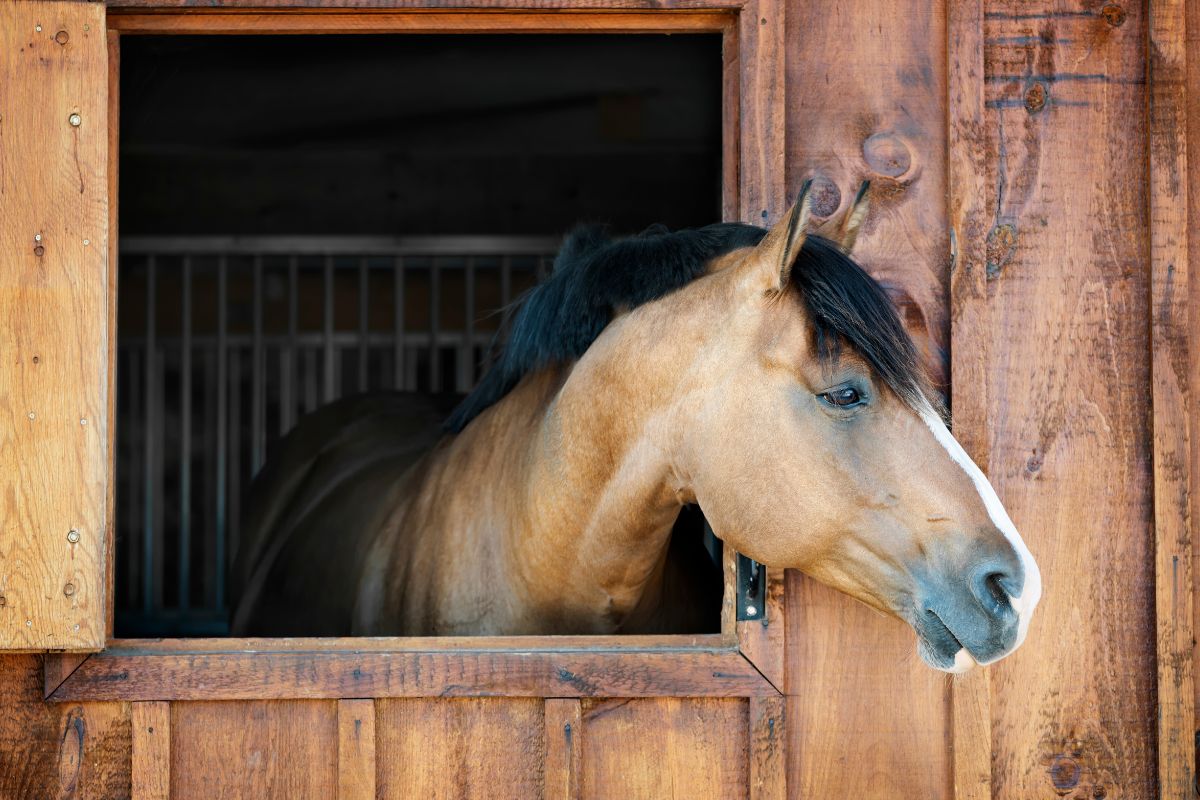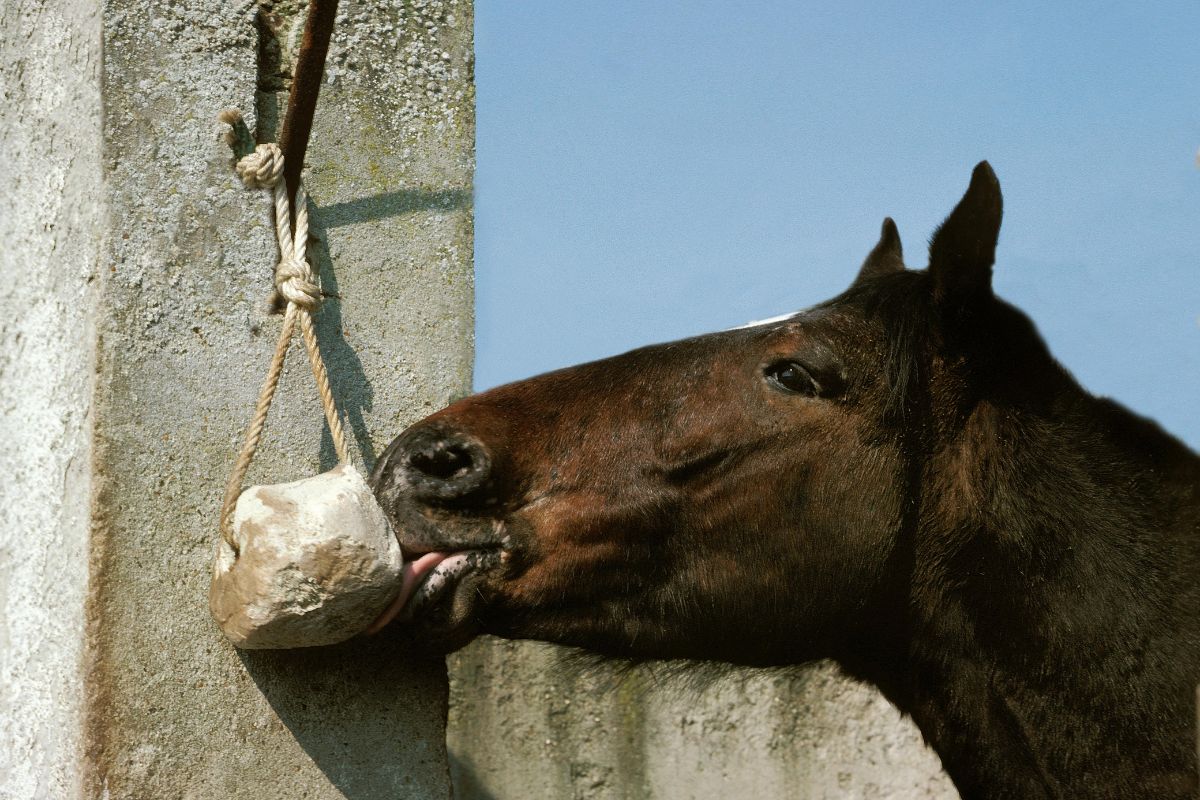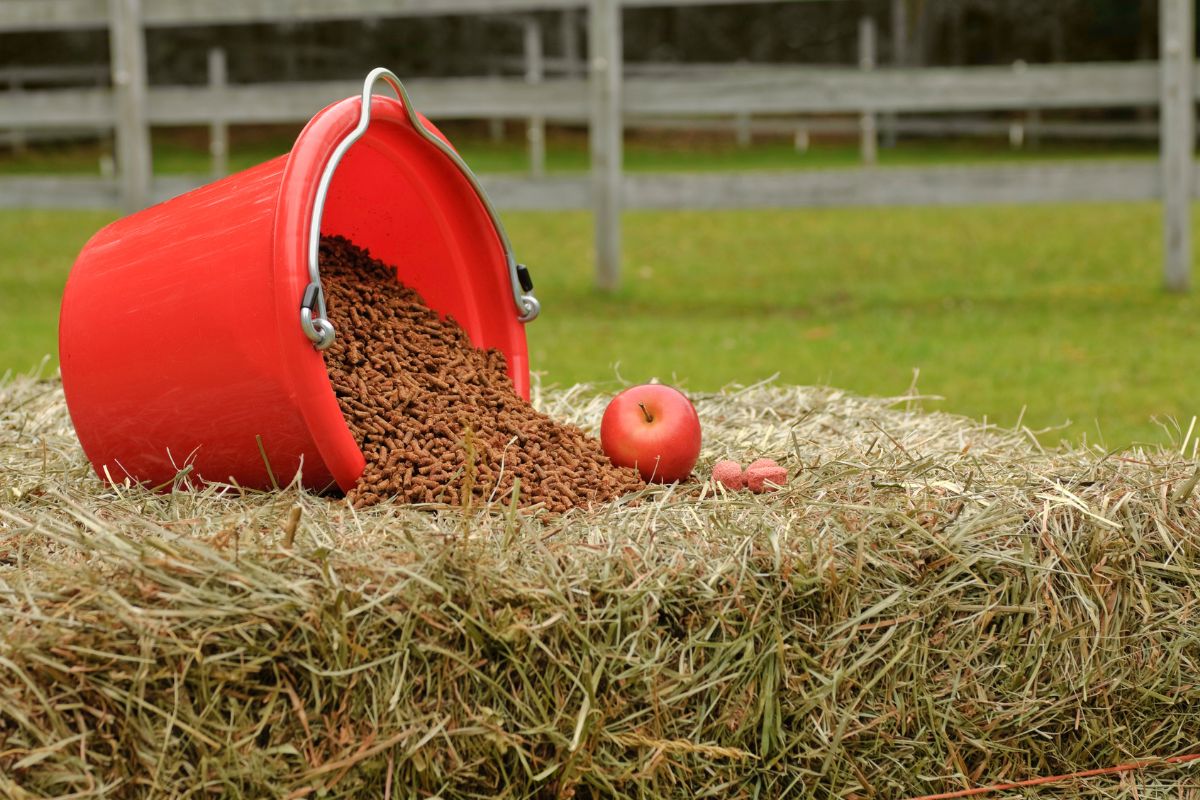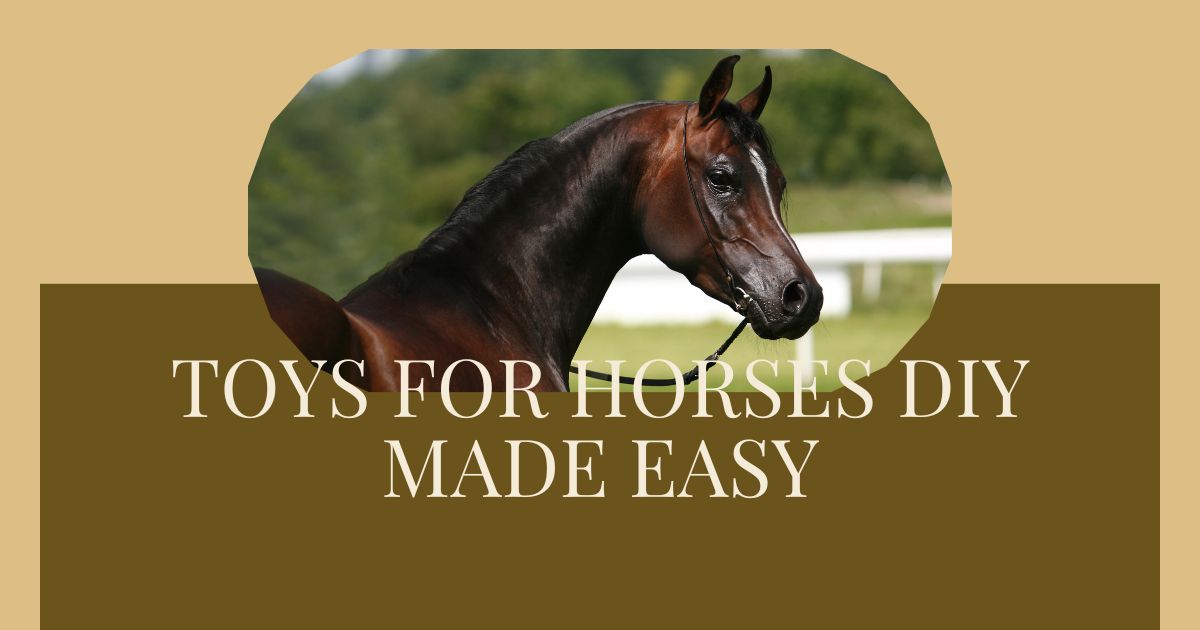DIY Equine Toys
Horses get bored when left alone in a stable or small paddock for extended periods. You need toys for horses DIY ideas to create equine toys for your horses. You can make some simple ones at home to keep your horse engaged, active, and happy when there isn’t much else to keep its mind busy. We’ll look at a few of them in this article.
Why Do Horses Get Bored?
Most horses enjoy watching what’s happening in the yard, whether it’s their fellow friends or the yard’s day-to-day operations and horse owners. However, if your horse has no access to the outside world, it may suffer from stable boredom.
Is your stable away from other horses, in a barn, or against a wall? If possible, relocate your horse to a different stable with a better view. Below are some reasons why horses get bored:
Your Horse Could Be Lonely
Horses are herd animals by nature and prefer to be with other horses for company. If you isolate your horse from other horses and have little interaction with their horsey friends, this could cause their boredom. Your horse may also be lonely due to its owner’s lack of attention. Spend more time inside the stable with your horse to keep them entertained!
They Require a Larger Stable
Is it difficult for your horse to lie and roll over in the stable? Your horse may require a larger stable! Horses in the wild can roam for miles and miles all day, so confining them to a stable with limited space to walk around can cause boredom.

Stimulation is Limited
Depending on your horse’s age, breed, nature, and energy levels, some horses require more entertainment and stimulation than others. Because most horses spend most of their day in their stable, they may need something to keep their minds occupied and stimulated. Homemade toys for horses play a significant role here.
Not Enough Exercise
Various reasons may restrict your horse’s exercise. If your horse is on box rest due to an injury, is a veteran, or you are unable to ride your horse, a lack of exercise may cause your horse to become restless and agitated.
Signs of a Bored Horse
Happy horses are curious, active creatures. Their natural habitat is to roam freely over grassland, interacting with other herd members. Spending the entire day outside has become impractical since horses were domesticated. This is due to a lack of space, inclement weather, and injuries.
This can make a horse grumpy, destructive, and unhappy. A bored horse may exhibit the following behaviors:
- Cribbing or chewing on fences
- Back and forth, weaving
- Biting humans
- Pulling on their blanket
- Provoking other horses.
If you come across these signs in your horse, they indicate that it requires more mental and physical stimulation. Some horses may be content with a daily trip to the paddock and a human visit. Others may need a little more. There are many fun and safe ways to combat horse boredom, but it takes trial and error.
Our Top Horse Boredom Breakers
Stall boredom can have a negative psychological impact on horses and lead to abnormal behavior. Some horses adapt well to stall life, but many resort to cribbing or pawing at the floor. Below are some enrichment for horses ideas that will help you keep your horse’s brain stimulated while it is stalling.
Light Weight Ball
This is one of the field toys for horses. You’ve probably heard of Jolly Balls, but they’re not cheap, and many people say they pop pretty quickly. If you’re willing to make such a sacrifice, why not try an affordable beach ball instead?
To keep your horse interested, place the ball inside a bag with a few treats and holes, and then watch your horse toss and nudge the ball around the field as it tries to get the goodies out.
You can try different treats to see what works best and encourages your horse to play, but make sure the holes are large enough for the goodies to pass through. If you leave a popped ball in your horse’s field, the horse may eat it. This is one of the fun outdoor DIY toys for horses, but it isn’t the most environmentally friendly DIY toy.
Cardboard Box Challenge
If you have a large enough cardboard box, try stuffing it with some chopped-up treats and taping it shut tightly. It’s best to use paper tape to avoid having shredded plastic in the horse’s field. Toss the box into the field and observe your horse’s reaction. It’s best to use treats with a strong scent so your horse knows there’s food inside.
To get its reward, the horse should soon throw the box around, pull at it, stand on it, and eventually tear it open. This can represent hours of engagement and fun with a tough box!
Milk Jug Treat Dispenser
Turning milk jugs into toys for horses on stall rest is the best option if you’re looking for a clever and inventive way to use up your milk jugs. You can have fun with this, and your horse will have endless fun getting the treats back out once you hang them up in their field.
This should keep their minds occupied for hours, so what should you do? You have many options, but if your horse enjoys carrots, let’s start there. Make some small holes in the jug’s edges so your horse can only get to the treats inside, and then fill the jar with carrot chunks.
Your horse will have to figure out how to tease the carrot pieces out, which should keep it busy for several hours, especially if you make it difficult.
To begin, you could slightly enlarge the holes, get a new jug and increase the difficulty level. Of course, you can use whatever your horse likes, not just carrots. Apples, grains, bananas, and other healthy fruits and vegetables are all excellent choices.
If you don’t want to focus solely on food, fill the jug with rocks to make an interesting noise or colored water to attract the horse’s attention. However, if there is no food reward for your horse’s work, you may find that this does not satisfy it. Use whatever engages your horse the most!
Ensure the milk jug is firm, or your horse will rip it down and shake it until the treats fall out. If it’s going to withstand a horse’s tugging and tussling, it needs a strong attachment point. This is most likely the most popular horse enrichment toys DIY idea available.
Puzzles
This is one of the horse boredom breakers that keep your horse alert. Give your horse a puzzle to keep its mind occupied. For instance, cut holes in a plastic ice cream bucket or milk jug, insert a few treats, and hang them on the wall. The trick is that your horse must figure out how to get the goodies out. This is a fun way to be creative while testing your horse’s intelligence!
Hay Net Beachball
If your horse enjoys balls, this is the toy for him. It’s also a good way to get your horse used to items above its head and boost its confidence. A beach ball, a hay net, and some robust rope are all you need. If it’s easier, you can also use a basketball.
Place the ball in the hay net and suspend it above the horse. You must carefully consider the height because you want it to be within reach of the horse’s head but not so close that the horse’s hooves become entangled in the net.
Getting this correct can be a bit of a balancing act, but if you work hard enough, you will succeed. It’s a good idea to keep an eye on your horses for a few days after rigging one of these up to ensure that no accidents with caught hooves occur.
Most horses adore this toy! They’ll spend hours headbutting and jostling it, watching it bounce, and repeating the process.
Some people achieve the same effect by suspending a tether ball at the proper height, reducing the risk of your horse becoming entangled. The horse can continue to have a lot of fun nudging and headbutting the ball.
This is worth a try, especially if your horse is bored in its stable, which has overhead rafters from which you can suspend the ball. If you get it to the correct height, your horse will have hours of fun.
It’s also a good workout! You can place treats in the hay net alongside the ball similarly. This may encourage your horse to interact with the item and play properly, but make sure there is no danger of them becoming entangled in the net while attempting to eat the treat.
Hanging Carrot or Salt Licks
When horse owners offer their horses treats, they usually jam the treat somewhere where the horse can easily eat it. In general, treat toys do the exact opposite. This is because a treat toy intends to engage and challenge the horse. They are also long-lasting so that the fun of the treat is maintained.
That is why, rather than putting a treat in a bucket or bag, hanging it is an excellent way to turn it into a DIY toy for your horse. This is especially beneficial for stallions, who may become bored standing inside their stable all day and are unable to roam or forage in the field.
There are many reasons a horse may need to stall, but if yours is, you should consider suspended treats to keep it occupied. You can buy these, but you can easily make your DIY version if you have some strong rope and a nail to hang it from.
Just tie the treat to the rope. If you choose a carrot, you must bore a hole through it. Swedes operate similarly.
You might be able to attach a salt lick using its container. After you’ve attached the treat, hang it from the ceiling so it can swing freely. When the horse approaches and attempts to eat it, the treat swings away, and the horse must follow it.
This provides hours of entertainment and extends the life of a treat because the horse cannot simply crunch it up. A carrot could last five hours instead of five seconds.
Of course, your horse may bite it in the right spot and knock it down, but you can always put another up there for it to play with. We recommend a similar but slightly more complicated approach with the fruit and vegetable kabob. Once again, you drill holes in fruits and vegetables and hang them from a string.
Your horse can graze away, picking and choosing from the various flavors and textures available. Any bits that fall can be cleaned up from the floor later, so it’s not a big deal if some fruits don’t stay on for very long.
Use horse-safe fruits and vegetables, and don’t overfeed your horse on treats, especially if it spends a lot of time in its stall and doesn’t get much exercise. While you may enjoy watching it enjoy a vegetable kabob, its weight and health are critical considerations. Hay should make up the majority of its diet!

DIY Stall Toy for Horses
How to Construct a Plastic Can Horse Hanging Stall Toy (DIY)
Do you want to make a simple DIY horse toy and puzzle for your stalled horse? This simple boredom-busting treat toy ticks all of the boxes! The upcycled canister food puzzle is a simple, low-cost stall toy and horse enrichment item. It’s a lot of fun for your horse and requires little effort. Let’s take a step-by-step look at this five-minute horse enrichment toy.
What exactly is the Horse Plastic Jar Toy?
This is one of the horse stall boredom toys that combine a treat feeder and a puzzle. It’s an upcycled food container, similar to a peanut butter jar. You take a plastic jar, poke holes in it, and hang it in your horse’s stall or the pasture.
When your horse nudges or pushes the toy, holes near the bottom dispense food or treats. The goodies fall to the ground or into a food pan.
Why is the Plastic Jar DIY Horse Toy Beneficial to Horses?
This food puzzle is an excellent horse toy! It helps keep stall-bound horses occupied and entertained. It also gives your horse a mental workout as they figure out how to get the goodies from the plastic toy.
As your horse nudges, bumps, and pushes the canister to get the treats, this simple DIY stall toy promotes coordination and fine motor control.
Why is the Plastic Jar Horse Toy an Excellent Toy for You?
This is a completely self-made stall toy! It’s also a simple horse toy to make. This puzzle feeder holds the horse’s food in a repurposed plastic container similar to a peanut butter jar. What remains is to drill holes for an attachment rope and the horse treats.
Not only is the DIY jar toy free, but it is also simple and quick to make. This horse enrichment puzzle will take less than five minutes to assemble if you use a drill. It’s still fast and straightforward if you use a knife or a melting tool.
Some horse enrichment entails buying ready-made horse toys for your equine companion to enjoy. This is fantastic for some items and adds even more convenience. However, adding DIY boredom busters for horses and enrichment to your budget is always an excellent idea.
What Horse Habits Does the DIY Can Food Encourage?
This plastic jar horse toy is not only entertaining; it also encourages critical natural behaviors. Remember that enrichment is all about promoting your horse’s natural equine behaviors! All of the advantages of enrichment stem from this. When you erect this do-it-yourself stall toy, it boosts your horse to:
- Search for food
- Look for food items (seeking and eating food above grass level)
- Solve a problem or piece together a puzzle
- Spend time working on a task
- Play with the can
- Have fun with cause and effect play
How to Create a Plastic Jar DIY Horse Stall Toy
Step 1: Look for Your Jar
You’ll need a plastic container with a screw-top lid for this DIY horse toy. It should be plastic because metal and glass are not suitable horse enrichment materials. It should have a screw-on top for easy access to treats.
We’re using a giant fish food container, but if you don’t have one, try a peanut butter jar or a plastic jam jar. They’re nearly the same size. Other options include ground coffee, protein powder, and mixed nuts. This is a great DIY because you don’t need to buy anything.
If you don’t have anything suitable in your kitchen, check the recycling bins at your school or workplace. Ignore the odd looks. If you come across more than one, take them all! There are ways to use multiple cans at once for an extra-exciting horse toy, so start stockpiling! Remember to thoroughly clean your canister before using it.
Step 2: Mark Holes for Horse Treats
The placement and size of the holes in the plastic jar treat feeder significantly impact how the toy functions. It is best to place the holes near, but not directly at, the bottom of the jar. You don’t want all of the food to fall out at once. Holes near the bottom indicate that the horse must nudge or push the jar just enough to tilt it, at which point food will spill out.
As a result, your holes must be the appropriate size for the treats you intend to use. Smaller holes are ideal for pelleted feed or small treats like shelled nuts. Make larger holes if you want to use larger horse treats, such as apple chunks.
You can quickly and easily add the holes using a drill and hole saw. No worries if you don’t have one at the barn. Cut holes with a knife or scissors carefully. It’s more challenging to get a spot started on a curved surface.

Step 3: Create a Hole for the Rope
A horse lead rope is the best rope for securing this toy overhead. It’s thick, strong, and highly secure. You can use different ropes, but be cautious. We recommend drilling a hole in the lid large enough to accommodate the end of a cotton or nylon lead rope.
Make a hole large enough for the rope to enter. If you don’t have a hole saw, cut a large X in the lid with a knife and push the rope end through.
Step 4. Examine the Can and Pay Attention to Details
Look inside your plastic can for any loose plastic pieces. If you see any rough edges around the holes, sand them down or carefully run a sharp knife around the edges to remove any sharp or pointed parts.
It’s now time to add the treats!
Step 5: Position the Food
You can make this hanging treat toy for horses with any food. Your canister may hold a lot of treats depending on the size of your can and the holes you add. Just keep in mind that the amount should be appropriate for your horse.
Step 6. Choose a Location for Your Canister Treat Toy
Use this horse toy in the pasture or stall. If you are using it in the stall, hang it above the level of your horse’s withers. It is best to secure it to an overhead beam so the toy can swing freely. Secure it to the wall if you don’t have access to an overhead rafter.
Ensure your attachment point is high enough to be out of your horse’s reach. If your stall walls aren’t tall enough, install a horse tying ring and use that instead. Tying rings are much safer for horses than traditional tying methods that use nails.
Attach this toy to a sturdy tree limb or a wooden fence pole if you use it in the pasture. We do not recommend attaching this horse enrichment toy to or near a hotwire or metal T-post fence. Place a pan beneath the treats to catch any that fall out. Then you can invite your horse over to join in on the fun!
Is the Hanging Can Horse Enrichment Toy Safe?
This horse enrichment toy is highly safe. However, it is critical to supervise your horse when introducing new items and toys. Examine how your horse uses the toy to ensure they are at ease with it and can get the food out without difficulty.
If your horse is unfamiliar with such items, you may need to introduce them gradually and in an open area. This is part of preparing your horse to accept enrichment. Create this toy with safe enrichment in mind. That’s a great way to get creative and add variety to your canister toy! However, keep safety in mind.
Conclusion
DIY horse toys are simple to make at home, and you can be as creative as possible. Just make sure that any toy you make comes from safe ingredients. Don’t give your horse anything that could choke or harm it if swallowed.
Fruits and vegetables are good choices, but avoid small plastic items or string they can eat. Make sure you secure anything your horse could become entangled in, such as hay nets, and keep an eye on any new toys you’ve added to ensure they’re safe!
